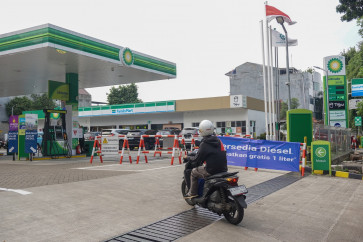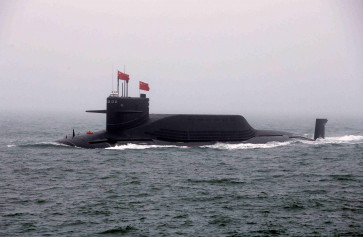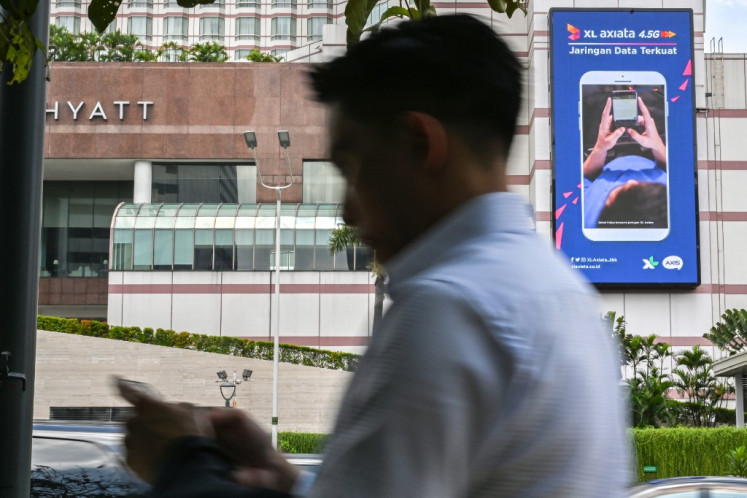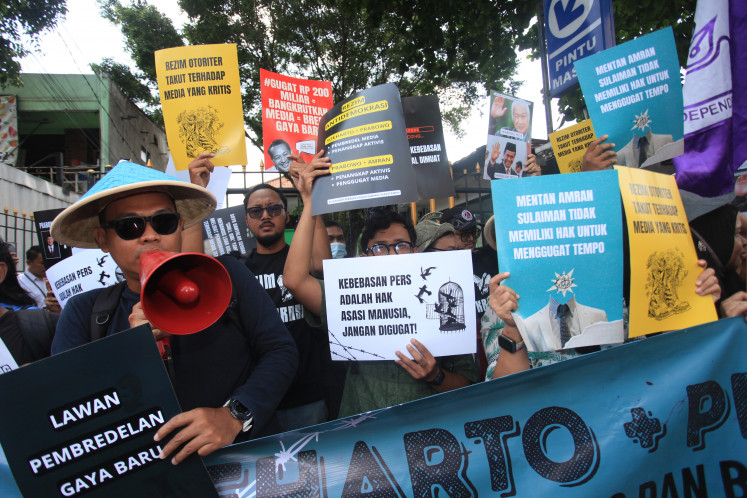Popular Reads
Top Results
Can't find what you're looking for?
View all search resultsPopular Reads
Top Results
Can't find what you're looking for?
View all search resultsSchool tests well in disaster simulation
It was morning when the earthquake rocked elementary school SD 48 Deah Glumplang in Banda Aceh
Change text size
Gift Premium Articles
to Anyone
I
t was morning when the earthquake rocked elementary school SD 48 Deah Glumplang in Banda Aceh. The students, who had just begun class, scrambled for cover.
Many of them hid under their desks to avoid falling debris — the school building was collapsing around them.
“Look for protection. Quick! Avoid anything that could break or hurt you,” one of their teachers cried.
A separate group of students evacuated the school building, covering their heads with their school bags. They gathered in the school yard, where they prayed that the earthquake would soon end.
After the earthquake had subsided, the students who had been trained and assigned to act as doctors moved through the school in search of injured.
They skillfully attended to their fallen comrades, moving them away from the building and out of the range of potential hazards, such as damaged walls.
“We were afraid that they would be hit by debris from the cracked walls during the aftershocks,” said Nora, one of the little doctors at the school.
After all the victims were saved, the teachers ordered all of the students to make their way to the safe house, where they would be protected from the tsunami that was fast approaching. The safe house was specially designed to withstand earthquakes and tsunamis.
Within the safe house, rations were handed out, and the seriously injured were attended to.
“We prioritized the wounded before they were sent to hospital,” Nora said.
This earthquake simulation ran according to plan. Nora, one of the school’s so-called “little doctors”, acted out her role with determination, drawing on her previous disaster training.
Experiences from the 2004 gigantic tsunami had taught Nora crucial survival theories.
The disaster mitigation simulation was sponsored by the Tsunami Disaster Mitigation Research Center (TDMRC), and was aimed at teaching young students how to survive the early stages of an earthquake and tsunami.
“Lessons in disaster awareness are effective if taught from early childhood on, especially at elementary school,” Muklis A. Hamid, head of the TDMRC’s Aceh education and training division.
Muklis said that his agency had found that adult training programs rarely resulted in parents passing on the information to their children.
“Such simulations are important for both students and teachers,” said Irma, one of the teachers at the elementary school.










